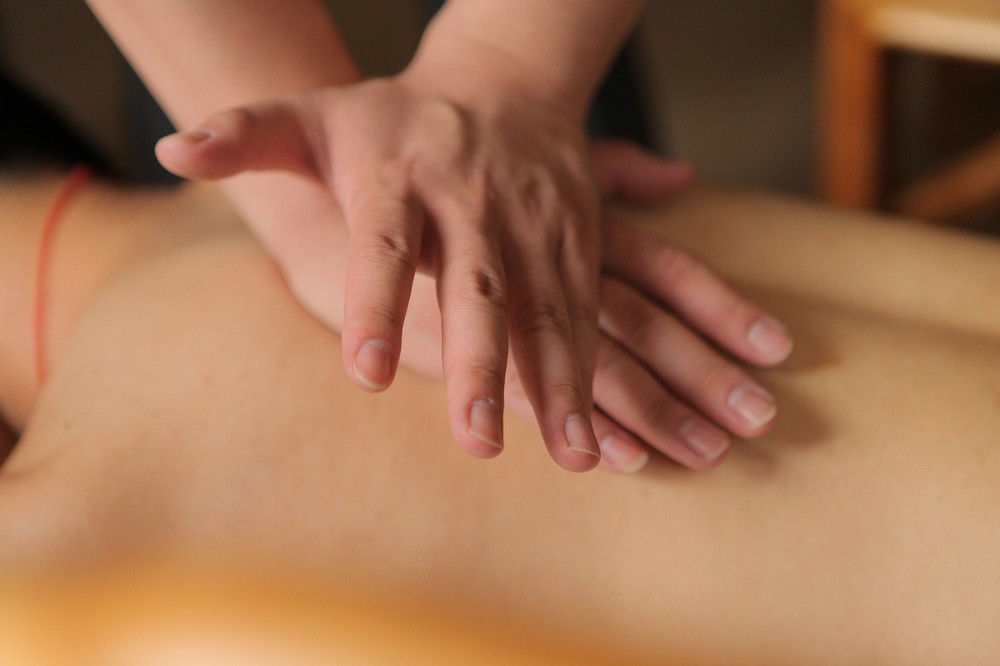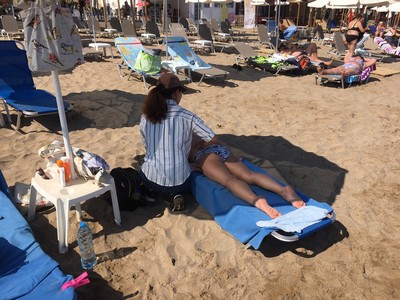The Best Massage for Fibromyalgia isTui Na Massage
The best massage for Fibromyalgia pain is Tui Na massage or Chinese massage in my opinion. A Tui Na massage relieves pain and releases stress by applying pressure to the acupressure points, meridians, muscles and nerves.
Tui Na massage, sometimes spelt as Tuina is translated as “push and grasp”. It is a healing and therapeutic form of massage that has been used in China for more than 5,000 years. Having a Tui Na massage removes blockages, relieves pain and releases stress by the application of gentle pressure applied to the acupressure points, energy channels called meridians, muscles, tendons and nerves.
The aim of the Tui Na massage is to allow Qi to be balanced and flow freely and smoothly which allows healing to occur.
The Best Massage for Fibromyalgia Pain

The best massage for Fibromyalgia pain is most often conducted over clothing or over a fine cloth. The Tui Na massage practitioner will use a variety of hands on methods of kneading, grasping, twisting, tapping, pressing and shaking. Having a Tui Na massage can be very relaxing but at the same time energizing.
It is used for a variety of ailments and can be used on very young children to the very frail and elderly.
"Tui na is becoming increasingly popular in the UK. All hospitals in China have a Tui na department and the therapy is seen to be on the same level as acupuncture."
How Tui Na is done
My experience of the best massage for Fibromyalgia pain and my other Fibromyalgia symptoms

After receiving numerous and very regular hands on treatments from both my Physiotherapist and my massage therapist such as myofascial release, cupping, vibrational massages, deep tissue massages and hot stone massages to help relieve my very stiff and very painful muscles and tendons throughout my body, I knew the benefits of massage. After any type of massage I received I always felt better but the effects did not last long. My muscles would tighten up again in a matter of days and I would wake up as stiff as a board and in dreadful pain.
I went on a Greek island holiday and whilst there had a couple of deep tissue massages. The massage therapists could not understand why I was so stiff, knotted and tense in my muscles. They worked very hard to try to give me some relief.
But it was whilst sunbathing on the beach that I saw a Chinese masseur giving a holidaymaker a massage on a sun bed. When the masseur finished with her client I asked her to give me a whole body massage. She spent a full 75 minutes giving me, what I now know was a Tui Na massage. It was sensational and made me feel wonderful. I arranged a further 2 massages with her before my holiday finished.
When I returned from holiday, serendipitously my usual Physiotherapist had the left the practice I attended. So an appointment was made with a different Physiotherapist.
I got onto the massage bed and the new Physiotherapist proceeded to give me Tui Na massage. She explained although she traditionally trained as a Physiotherapist with Western medicine she was now learning and practising with Traditional Chinese Medicine techniques and getting very good results for her clients. She asked if I wanted to go down the Traditional Chinese Medicine route with a mix of cupping, Tui Na massage and acupuncture. I agreed. As she was very busy and had to limit my appointments to once a fortnight she recommended I see another acupuncturist and Tui Na masseur in between appointments. I found the perfect Traditional Chinese Medicine practitioner who not only offered Tui Na massages and acupuncture but also fire cupping, moxibustion and herbal recommendations.
If you cannot find a Tui Na massage practitioner in your locality, try a Thai massage therapist. There is little difference between the effects of Tui Na massage and Thai massage. And ANY massage is beneficial for Fibromyalgia pain and other symptoms of Fibromyalgia.
More on the Best Massage for Fibromyalgia
Tui Na massage, also known as Chinese therapeutic massage, is a form of bodywork that has been practiced for thousands of years in Traditional Chinese Medicine (TCM). It utilizes various manual techniques to stimulate the body's energy channels, balance qi (energy), and promote overall health and well-being. When it comes to pain management, Tui Na massage offers several benefits:
- Pain relief: Tui Na massage can effectively alleviate acute and chronic pain. The techniques used, such as kneading, rolling, and pressing, help to release muscle tension, improve blood circulation, and promote the flow of qi in the body. This can lead to pain reduction and a decrease in discomfort associated with conditions such as muscle strains, sprains, arthritis, and fibromyalgia.
- Improved circulation: By applying pressure and manipulating the soft tissues, Tui Na massage helps enhance blood circulation throughout the body. Increased blood flow brings vital nutrients and oxygen to the affected areas, promoting the healing process and reducing pain caused by poor circulation or ischemia.
- Relaxation and stress reduction: Tui Na massage incorporates techniques that induce deep relaxation, helping to reduce stress and anxiety. When the body is relaxed, the production of stress hormones such as cortisol decreases, leading to a decrease in pain perception. Moreover, relaxation triggers the release of endorphins, the body's natural painkillers, providing further pain relief.
- Restoration of energy balance: According to TCM theory, pain is often seen as an imbalance or blockage of qi in the body's meridians (energy channels). Tui Na massage works to restore the harmonious flow of qi, unblocking stagnant energy and restoring balance. By addressing the underlying energetic imbalances, Tui Na can provide long-term relief from pain symptoms.
- Enhanced flexibility and range of motion: Tui Na massage involves stretching and joint mobilization techniques that can help improve flexibility and increase range of motion. By loosening tight muscles, tendons, and fascia, it can reduce stiffness and enhance joint mobility, thereby reducing pain associated with restricted movement.
- Targeted treatment: Tui Na massage is highly adaptable and can be tailored to address specific areas of pain or discomfort. Skilled therapists can identify the root causes of pain by assessing the body's meridians and applying appropriate techniques to the affected areas. This targeted approach ensures that the massage is focused on addressing the underlying issues, leading to more effective pain relief.
- Non-invasive and holistic approach: Tui Na massage offers a non-invasive alternative to conventional pain management methods such as medication or surgery. It is a holistic therapy that considers the interconnectedness of the body, mind, and spirit. By addressing pain from a holistic perspective, Tui Na massage not only targets physical symptoms but also supports overall well-being.